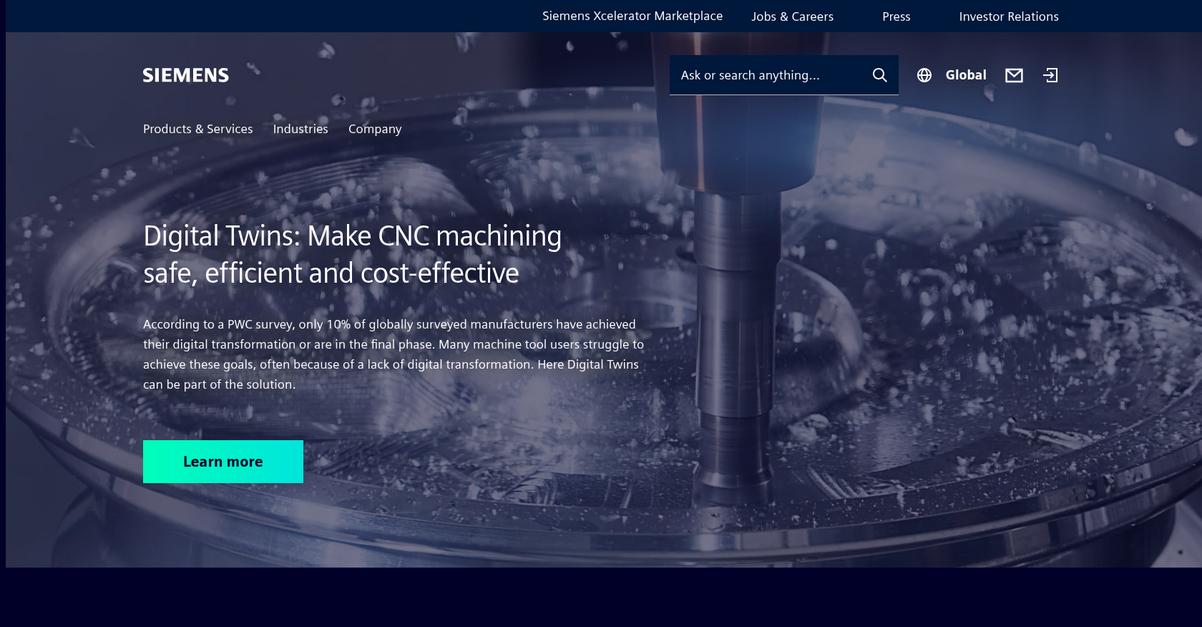Tired of your data chaos?
Your teams are chasing information across messy spreadsheets and siloed systems. This creates frustrating bottlenecks and slows your entire workflow to a crawl.
This disconnect means marketing, engineering, and operations are never on the same page. It’s how costly errors and delays happen.
Without a single source of truth, launching new products or updating existing ones becomes a high-risk gamble. This inefficiency directly impacts your company’s ability to scale quickly.
The right software can fix this by creating a central hub for all product data, finally unifying your teams and processes.
In this guide, I’ll walk you through my picks for the best product data management software designed to eliminate chaos and streamline your team’s collaboration.
You’ll learn how to choose a tool that fits your needs, helping you reduce errors and free your teams from tedious manual spreadsheet work.
Let’s dive in.
Quick Summary:
| # | Software | Rating | Best For |
|---|---|---|---|
| 1 | PTC → | Large manufacturing enterprises | |
| 2 | Siemens → | Mid-sized firms, e-commerce | |
| 3 | Aras → | Mid-sized, fast-scaling ecommerce | |
| 4 | Synergis Software → | Engineering firms with global sites | |
| 5 | OpenBOM → | Product & IT managers, SMEs |
1. PTC

Struggling with fragmented product data and workflow chaos?
PTC offers a digital foundation to transform how your products are designed, made, and maintained. This means you can finally unify your product data.
This capability helps you overcome product complexity by managing configurations, product variants, and requirements, leading to reduced costs and improved product quality.
Here’s how PTC helps.
PTC accelerates product development through strong collaboration tools for both hardware and software, effectively managing complexity and reducing costs. You can also enhance manufacturing efficiency with real-time production performance and improved supply chain collaboration. Additionally, their solutions optimize service operations, maximizing uptime and reducing costs for your service teams, which directly impacts customer satisfaction. Plus, PTC empowers you to innovate faster with a digital foundation supporting collaborative development across the entire product lifecycle, boosting revenue.
The result: Deliver more value through your products.
Key features:
- Accelerated Product Development: Utilize strong collaboration tools for hardware and software to manage product complexity, reduce costs, and improve overall product quality.
- Enhanced Manufacturing Efficiency: Optimize real-time production performance and improve supply chain and design collaboration to boost your company’s manufacturing processes.
- Optimized Service Operations: Maximize product uptime and reduce service costs, ensuring high-quality and efficient service delivery that enhances customer satisfaction.
PTC features, pricing, & alternatives →
Verdict: For product and IT managers navigating fragmented systems, PTC stands out as a best product data management software choice. Its focus on unifying product data, managing complexity, and enhancing collaboration across engineering, manufacturing, and service, as evidenced by 95% of Fortune 500 discrete manufacturing companies relying on it, directly addresses the pain points of version control issues and workflow bottlenecks, empowering your team to conquer chaos.
2. Siemens

Struggling with fragmented product data across your teams?
Your current systems likely cause bottlenecks and version control headaches.
Siemens offers solutions leveraging digital twins to unify your product data.
This means enhanced efficiency.
You can streamline collaboration across engineering, operations, and marketing. By creating a comprehensive digital twin, you get a single source of truth for all product information. This eliminates data silos and version discrepancies, freeing your teams from manual spreadsheet chaos. This integrated approach dramatically reduces errors, helping you achieve greater business agility and make faster, more informed decisions.
This is how you conquer chaos.
Before diving deeper, you might find my analysis of best SaaS billing software helpful to manage complex pricing.
Key features:
- Digital Twin Technology: Unifies product data from various sources into a single, comprehensive digital representation, reducing errors and ensuring consistent information across all departments.
- Enhanced Collaboration: Provides a centralized platform for all teams, like engineering, operations, and marketing, to access and update product data, improving workflow and decision-making.
- Streamlined Efficiency: Automates data management processes and provides real-time insights, allowing your teams to focus on innovation instead of manual tasks and data reconciliation.
Siemens features, pricing, & alternatives →
Verdict: If your organization needs a robust, secure, and scalable Product Data Management software solution, Siemens offers digital twin technology to unify product data, streamline collaboration, and enhance efficiency. This makes it an ideal choice for mid-sized companies and fast-scaling e-commerce retailers seeking the best Product Data Management software.
3. Aras

Are fragmented systems bottlenecking your product development?
Aras provides an open and adaptable Product Data Platform, directly addressing your challenges with workflow bottlenecks and version control issues.
This means you can connect silos for streamlined collaboration, allowing you to reduce time-to-market delays and rework.
Here’s how to conquer that chaos.
Aras solves these problems with its Product Data Platform and Composable Application Framework. This powerful combination gives you an extensible data model with shared services, plus an extensive library of pre-built apps and app building blocks that can be rapidly deployed.
Additionally, the embedded low-code development environment enables rapid application development with full CI/CD, which means you can tailor workflows and user interfaces without limitations. This flexibility allows your team to respond quickly to market changes and enhance traceability and interoperability across engineering, operations, and marketing. Plus, you can integrate EBOM and MBOM, improving product quality.
The result? You embrace new features without costly migrations, avoiding the disruptive downtime often associated with lengthy upgrade processes.
Speaking of data management, you might find my guide on lab inventory management software helpful.
Key features:
- Product Data Platform: Offers an extensible data model with shared services common to PLM, digital thread, and digital enterprise business processes, unifying your product data.
- Composable Application Framework: Provides an extensive application library with pre-built apps and building blocks, enabling rapid deployment and extension for tailored workflows.
- Low-Code Development: An embedded development environment facilitates rapid application development with full CI/CD, allowing you to adapt quickly to market and regulatory changes.
Aras features, pricing, & alternatives →
Verdict: Aras delivers an open and adaptable platform, making it a strong contender for the best product data management software for mid-sized companies and fast-scaling ecommerce retailers. Its ability to connect silos, eliminate dead-end customizations, and enable rapid application development ensures robust and scalable solutions.
4. Synergis Software

Struggling with fragmented product data and version control chaos?
Synergis Software offers Adept, a robust document management platform designed to centralize your critical engineering and business content.
This means you can align your entire workforce on a single source of truth, eliminating workflow bottlenecks and ensuring everyone accesses the correct information. The result is improved productivity.
Here’s how you can transform your operations.
Adept gives you fast, centralized access to your most important drawings, documents, and data, empowering stakeholders to quickly find the right content regardless of where it’s stored. This can improve your team’s productivity by 20 to 30%.
You can also ensure version control, helping you avoid expensive mistakes and safety issues by always working with the correct document version. Additionally, it streamlines design reviews and feedback by offering an integrated viewer that supports many file types like AutoCAD, Word, Excel, and PDF, allowing you to view and markup files without their native applications. Plus, Adept helps you automate workflows and enhance security for your intellectual property with an extensive audit trail for regulatory compliance.
The result is a more efficient, secure, and collaborative environment.
Key features:
- Centralized Document Access: Find documents fast and gain a unified view of engineering and business content, aligning your team on a single source of truth from anywhere.
- Version Control & Workflow Automation: Ensure your workforce always uses the correct version while automating approval processes and eliminating bottlenecks with time-based alerts.
- CAD Integration & Security: Empower CAD users with integrated document management inside their applications, protecting your intellectual property with strong security and an extensive audit trail.
Synergis Software features, pricing, & alternatives →
Verdict: Synergis Software stands out as a strong contender for the best product data management software, offering powerful features like centralized access, version control, and CAD integration. This helps you streamline workflows, reduce risk, and improve productivity, ensuring your digital assets are secure and your teams can collaborate effectively, even managing billions of dollars in digital assets across global sites.
5. OpenBOM

Struggling with fragmented product data and chaotic workflows?
OpenBOM offers a collaborative workspace to tackle challenges like version control, data silos, and communication gaps across your teams. This means your engineering, operations, and marketing can finally access a single source of truth.
You’ll find OpenBOM’s capabilities address fragmented systems, providing accurate, reliable product cost and component information.
It’s time to streamline your product development.
OpenBOM reimagines PDM, PLM, and ERP by centralizing product data. This cloud-based platform integrates with your existing tools, providing a flexible data model for items, Bills of Materials, and orders.
You can easily manage complex xBOMs and streamline the product lifecycle change processes. OpenBOM supports various integrations, including CAD, PDM, PLM, and ERP systems, ensuring seamless data transfer and collaboration with contractors. The result is improved decision-making and efficient product development, eliminating manual spreadsheet chaos.
Additionally, OpenBOM’s multi-tenant architecture and real-time collaboration features mean distributed or remote teams can work together on product structures and related information. You gain control over item management, revision control, production planning, and document management, leading to significant error reduction and enhanced business agility.
This frees your teams from manual tasks.
Key features:
- Centralized Product Data: Manage items, Bills of Materials (BOMs), revisions, and changes in a single, flexible data model that easily connects engineering and procurement.
- Seamless CAD & Enterprise Integrations: Connect with multi-CAD systems, PDM, PLM, and ERP, ensuring accurate data transfer and enabling simultaneous editing for team collaboration.
- Agile Production Planning & Procurement: Optimize your order management, including RFQ, PO, and inventory, fostering real-time collaboration with supply chain partners and contract manufacturers.
OpenBOM features, pricing, & alternatives →
Verdict: OpenBOM addresses critical pain points for product and IT managers, making it a strong contender for the best product data management software. Its collaborative workspace and flexible data model streamline processes, reduce errors, and enhance agility, enabling faster, more informed decisions for your company’s product development.
6. Onshape

Tired of fragmented product data systems?
Onshape delivers cloud-native product data management (PDM) capabilities, unifying your design and manufacturing processes. This means you can say goodbye to workflow bottlenecks and version control issues.
You’ll discover how Onshape tackles these challenges head-on with built-in PDM for seamless data management. This approach eliminates the hassles typically associated with traditional PDM systems, offering you a single source of truth for all your product information.
Ready to simplify your product data?
Onshape helps you streamline collaboration, enhancing efficiency across engineering, operations, and marketing teams. The result is a significant reduction in errors and increased business agility.
Key capabilities include branching and merging for fearless design exploration, allowing you to track all activity and revert to any previous version with infinite restore. This ensures your team is always working with the most current information. Additionally, its real-time communication features, like robust collaboration tools and integrations, empower dispersed teams to work together on designs simultaneously. You can instantly grant or revoke access as needed, ensuring secure teamwork. Plus, Onshape deploys instantly on any device, requiring zero IT overhead, meaning everyone is always on the latest version.
You can simplify your entire product development process.
If you’re also looking into broader marketing solutions, you might find my article on best campaign management software helpful for expanding your reach.
Key features:
- Built-in PDM: Eliminates the hassles of traditional PDM by integrating data management directly into your design environment, ensuring a single source of truth.
- Branching & Merging: Offers git-style version control, allowing your team to fearlessly explore design options and track all activity for infinite restore points.
- Real-time Collaboration: Empowers dispersed teams to work on designs simultaneously with secure access control and seamless integrations, boosting productivity.
Onshape features, pricing, & alternatives →
Verdict: Onshape stands out as a strong contender for the best product data management software, particularly for mid-sized companies and fast-scaling e-commerce retailers. Its built-in PDM, real-time collaboration, and version control features address common pain points like data fragmentation and workflow bottlenecks. Onshape users have reported saving up to 30% in development time.
Conclusion
Time to end data chaos.
When your teams chase information across messy spreadsheets and siloed systems, your entire workflow slows. This is how costly errors and version control issues happen.
This disconnect between engineering, operations, and marketing is where launch delays happen. It directly impacts your company’s ability to innovate and scale, keeping your teams stuck in frustrating manual work.
Here is my top recommendation.
From my extensive review, PTC stands out. Its powerful platform is specifically built to unify complex product data, finally ending the cross-departmental chaos for your organization.
What makes it the best product data management software is how it helps accelerate your entire development lifecycle by managing complexity. Top manufacturers trust it for a reason.
I suggest you visit the PTC website to see how its digital foundation can transform your product development process.
Your teams will innovate faster.






